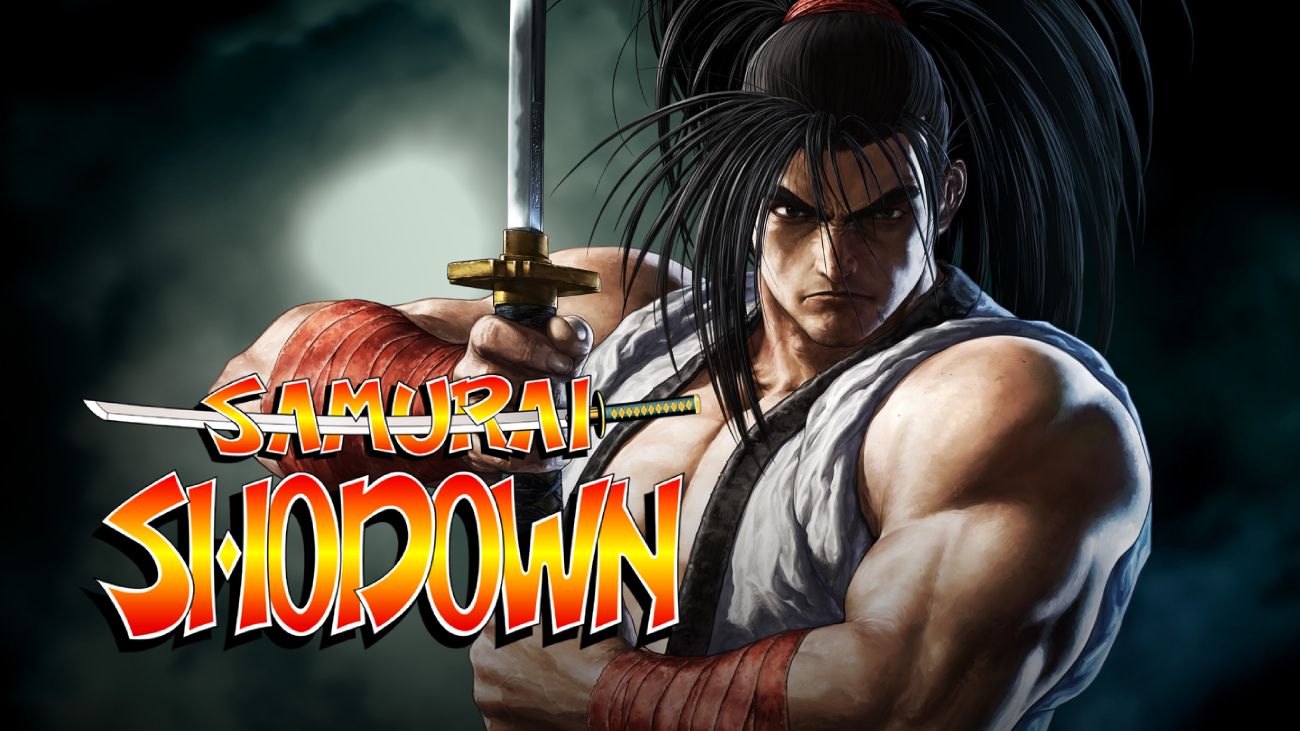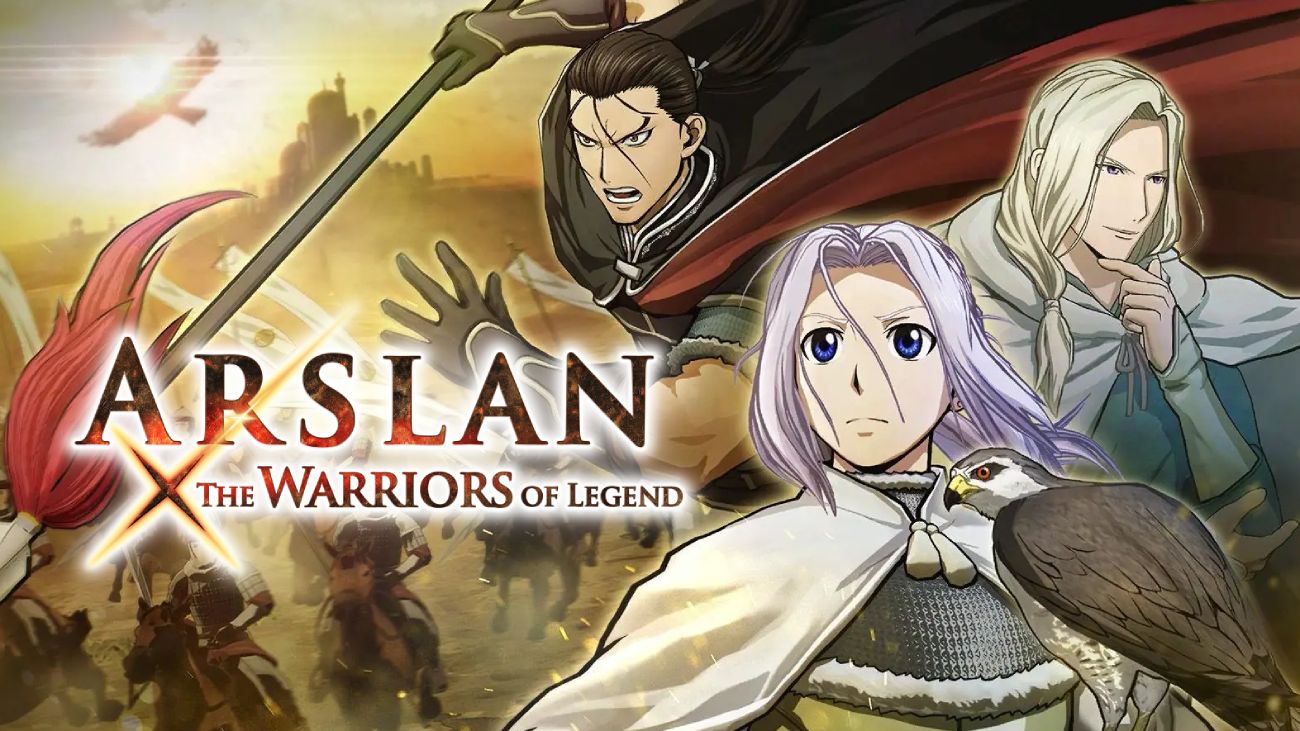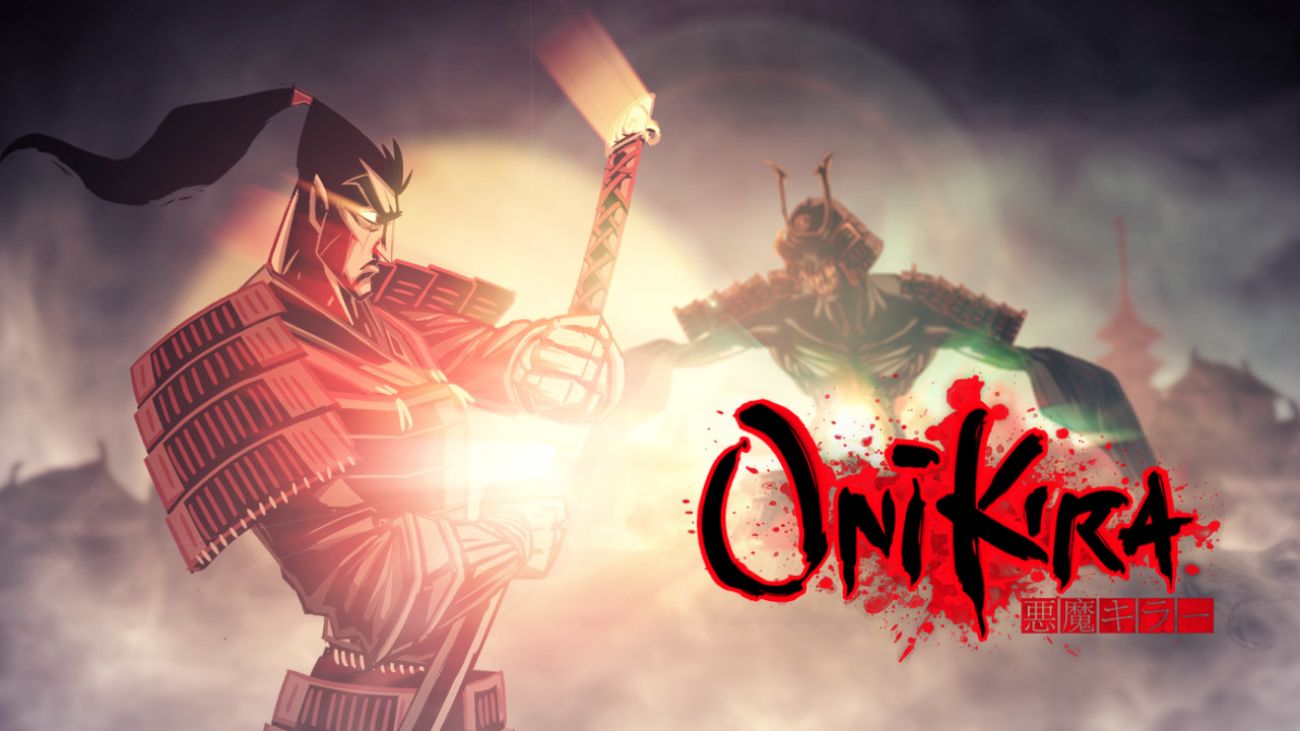If there’s one famous samurai loved by the Japanese, it’s Yukimura. But since January 2016, he’s more current than ever, as Taiga Drama 2016 is dedicated to his figure. Outside his native Japan, he’s not as well known as Nobunaga or the serving Hideyoshi, taking advantage of the fact that the Pisuerga passes through Valladolid (or that the Kamogawa passes through Kyoto), what better opportunity to talk about one of the most popular historical figures in the land of the samurai: Sanada Yukimura, the hero of the Sites Osaka.
Yukimura’s popularity in the Japanese culture
If you think of the famous samurai, many names come to mind. But if we ask a Japanese, surely Gueris Yukimura will be one of the first I mention. This man’s popularity is enormous. They ascribe all the qualities that have been and to have: brave warrior, faithful to death, self-sacrificing, heroic… They even paint him as a handsome waiter: A handsome man, a true mass idol of feudal Japan. Or, at least, that’s the vision popular culture gives us.
But unfortunately for the Yukimura legion of fans, reality isn’t always like it is in Koei video games. Besides her distinctive red armor, the historical Sanada Yukimura had little to do with the one we met in Sengoku Basara or Samurai Warriors in Service. You only have to look at vintage portraits to verify this.
The truth behind Yukimura’s famous name
To begin with, Heal Yukimura was never called “Yukimura“. His real name was “Sanada Nobushige” but the alias became so famous that today everyone knows him by that name. Apparently, the thing comes from a series of novels from the “The Ten Braves of Sanada“, which was what really catapulted this good man into stardom. In those days, with the iron censorship of the Tokugawa Government in full force it was not well thought of to write about real historical figures (and even less so if they had been enemies of the shogunate, as was the case), so the author had to change the protagonist’s name to avoid problems.
Yukimura “Yuki” appears to have been named after his father “Masayuki Mura” by Date Tsunamura, a daimyo who was giving the shogunate quite a few headaches by the time the novel began publication. With this cramp, the thing was sufficiently disguised to avoid the wrath of the competent authority, but the character was still recognizable.
In reality, this type of practice was commonplace in the literature and theater of the time. The novel was popular enough to continue generating sequels up to s. XX and Yukimura‘s invention made a fortune. The name remained for the remains. Don’t get too crazy here, we’ll also call him Yukimura, as usual.
A hero for a country at war
Yukimura was born in 1567 and died (excuse the spoiler) in 1615 defending the castle of Osaka, where he would become famous for posterity. It is precisely this battle, the second site of Osaka Castle (also called Summer Site, taking place six months after the Winter Site call from 1614), that definitively closes the Sengoku in Japan. Behind her, the Tokugawa will remain, definitively and for the next 250 years, undisputed masters and lords of Japan.
Let’s go to a situation. At the beginning of the s. XVII, Tokugawa Ieyasu had the L’unification of Japan completed and virtually set aside the era of civil wars with his victory in the Sekigahara battle of 1600. Remember that, when Hideyoshi died, the newly unified empire threatened to break up again; the country was divided into two parts: The supporters of Ieyasu in the East and those of Hideyoshi’s heir, still a child in the West.
Leyasu managed to crush his enemies with a single blow on the battlefield and even allowed himself the luxury of a carriage named Shogun in 1603. But, technically, the power wasn’t entirely his. Hideyori, Hideyoshi’s son and rightful heir, was still alive. He retained some political influence, had powerful allies, and, most importantly, controlled the formidable force of Osaka, the largest and most impregnable castle in the country.
Hideyori was a sword of Damocles constantly hanging over Ieyasu’s head. Tensions between Edo and Osaka grew until, in the winter of 1614, they finally exploded. Sanada Yukimura was to be one of the main players in this conflict. A great drama that would throw the curtain on a whole century of internal wars, to make way for the peaceful Japan of the Edo era.
The Sanada was traditionally a vassal of the Takeda clan. When the great Takeda Shingen died, his son Katsuyori was unable to cope with Nobunaga‘s push and the clan eventually collapsed. When the Takeda disappeared from the map Sanada Masayuki, head of the Sanada clan. He had no choice but to submit to Tokugawa Ieyasu in 1586.
But the Sanada didn’t welcome the change very readily, and the family eventually split up. The eldest son, Nobuyoshi went to serve the Tokugawa and would make his fortune under his protection. The little one, Yukimura, opted for the opposite side. His loyalty was with the Toyotomi, first with Hideyoshi, then with his son Hideyori. This stubborn devotion to the Toyotomi house would be a constant in his life, and he would turn it into a real stone in the Ieyasu sandal thereafter. More than a stone, a rock of grease.
Others say that the father, Masayuki, played with two bridges by placing a son on each side. So whoever won, when the dust of battle had settled, there was sure to be a Sanada on the victor’s side to ensure the clan’s survival.
Too Machiavellian? Who knows. Such events were common among samurai families. Yukimura took his role very seriously. This young general was going to cause a lot of trouble for the Tokugawa, and some of them almost cost them dearly.
The Prolegomena of Sekigahara (1600)
In the middle of the campaign, Sekigaharales Tokugawa was able to see in their meats how the Sanada, father, and son spent them. Rolled in his Ueda fortress, in Shinano province (present-day Nagano prefecture), they lacked little to cut short the future shogun’s race for fame. But this was not the first time Ueda’s walls had severely destroyed Ieyasu. It would seem that this castle, the Sanada house, was cursed for the Tokugawa.

Already in 1585, Ieyasu had tried to assault him, with infamous results. Toyotomi Hideyoshi, practically the master and lord of Japan at the time, came to put peace, and mediation in favor of the Sanada, and Ieyasu’s guests had to go home with their tails between their legs. The expedition of conquest had ended in resounding failure. As a result, from that moment on young Yukimura‘s destiny would be forever linked to the Toyotomi. After the first D’Ueda Yukimura battle marries the daughter of Otani Yoshitsugu, one of Taiko‘s most trusted men. So, alliances were forged in feudal Japan, with the marriage coup.
The Battle of Ueda and Sekigahara
But the happy fortress still had plenty of war to give, unfortunately for Ieyasu. In 1600, in the prelude to Sekigahara with the whole country on the warpath and armies on both sides forcibly advancing to meet, Ueda would once again be a stone in the Tokugawa road. This time for Ieyasu‘s son (and future second shogun of his dynasty), Hidetada.
In principle, the entire Sanada clan was on the eastern side of this campaign. But old loyalties pull hard and, when siren songs began to arrive from the Toyotomi camp, the Yukimuras and his father Masayuki they were finally convinced. They left the Tokugawa ranks and locked themselves away in their hometown, ready not to give a tract of land to the armies of Ieyasu. And my boy, they didn’t give in.
Hidetada was in command of 36,000 men, marching from Edo along the Nakasendo road, with the aim of meeting the main body of the Tokugawa army, commanded by his father Ieyasu. On his way, he ran into Ueda Castle, with Sanada Sr. and Sanada Jr. behind its walls. Maybe thinking it would be an easy win to add to his resume since he was passing by, he decided to take it by storm. Crassus error. The Sanada managed to resist the bathy Hidetada‘s assault for four days. More than enough time to make him late for the appointment with his father. By the time he decided to take it for granted and get back on track, I’d lost precious time.
Hidetada‘s 36,000 men arrived at Sekigahara with the battle already over. Ieyasu had these troops for his battle plans, and he never forgave his son for such a slip. The damned Sanada had almost spoiled the Tokugawa cause. And best of all, meanwhile, Sanada Nobuyuki, the family’s eldest son, marched in such a rampant battle under Ieyasu‘s banners. The old fox had promised him the lands of his father, the rebel Masayuki, in case of victory. As we see, that of war between brothers this happened everywhere.
Post-Battle Consequences
After victory in the mother of all battles, Ieyasu, already as virtual owner of Japan, fulfilled the agreement. He confiscated the Sanada family fiefdom and gave it to Nobuyuki. With Yukimura and his father, he was strangely magnanimous: instead of having them beheaded, as was the custom in such cases, he simply sent them to exile with the monks of Mount Koya san. Elder Masayuki would die there, in full retreat, in 1608. His son Yukimura would also have ended his days praying chants to the Buddhas had it not been for the fact that, in 1614, fate came knocking at his door.
Japan is back on the warpath. Ieyasu marched with his “mesnadas” (followers) to lay siege to Osaka Castle, the last Toyotomi stronghold, and Hideyori (already a boy of 21) called his loyalists to arms to come and defend it. Yukimura didn’t think twice: He left the habits hanging on a coat hanger and, with his son Daisuke, went to Osaka to fight the Tokugawa again. The same in whose ranks his own brother (and head of the Sanada family), Nobuyoshi, once again marched. On the walls of Osaka, Yukimura leaves his name written for posterity.
The Winter Site (1614)
Since the victory at Sekigahara, Ieyasu had waited with his proverbial patience for an excuse to eliminate Toyotomi Hideyori once and for all, the only shadow that could threaten his hegemony over Japan. The opportunity was slow in coming, but it finally did in 1614. An absurd story about Hideyori‘s alleged insult to his person was all Ieyasu needed to mobilize his legions. He put his entire war machine into service and, as he had done in 1600 in the Sekigahara campaign, his hosts slowly began to hover over Osaka. Again East against West, Tokugawa against Toyotomi.
The Toyotomi chose not to fight in the open field and locked themselves behind the formidable walls of Osaka. Yukimura had proposed a much bolder plan: meet the eastern armies and cut off their advance, before giving them time to occupy positions.
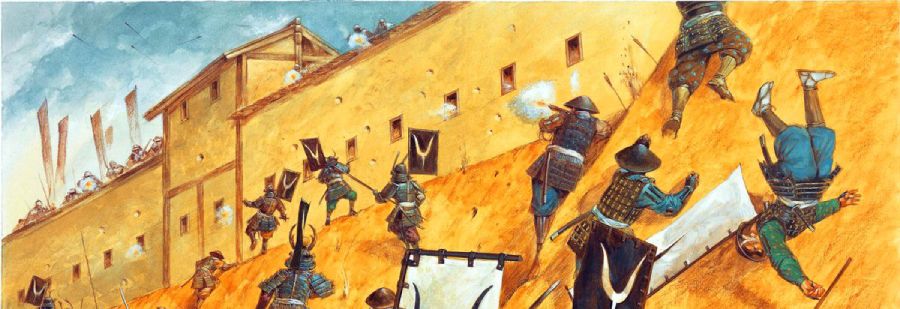
The strategy had a chance of success and even considered occupying Kyoto to win the emperor’s favor and declare Ieyasu an enemy of the state, which would force all the daimyo in the country to turn against him. But Hideyori hasn’t finished seeing it clearly. Yukimura was a prestigious general but, officially, the commander-in-chief of the Western forces was Hideyori, and his judgment ultimately prevailed. The battle would be decided by a siege of blood and fire.
The Siege Begins
The Eastern forces numbered around 200,000 men for something less than 100,000 of those in the West. At the moment of truth, Osaka’s defenses would be tasked with compensating for this imbalance in troop numbers. It can be said that the Summer Site and the Winter Site are the epilogue to the Sengoku period, the last great battle fought by the samurai armies in Japan. The campaign is so complex that it deserves a separate article, so this time we’ll focus exclusively on Sanada Yukimura’s adventures.
With the Tokugawa mesnadas looming over Osaka, the Western army is working to reinforce the castle’s already solid walls. Before the flanking walls are a rose barbican whose defense was entrusted to Sanada Yukimura. This small crescent-shaped parapet, built with wooden palisades raised on clay mounds, would be christened for posterity as Sanada Maru (“Sanada rampart”)This is where Yukimura and his mighty ones would forge their legend. It’s no coincidence that this year’s Taiga Drama title is precise “Sanada Maru“.
In the middle of December 1614, with his forces already deployed and positions secured around the enemy stronghold, Tokugawa Ieyasu stood before Osaka‘s walls to lead the siege in person. After several weeks of skirmishes, the real battle was about to begin. For January 3 the Tokugawa army had given a good account of fortresses and outer defenses. The fence over the castle is shrinking. The only thing separating the Tokugawa from the walls of the main complex was the Sanada Maru, Yukimura‘s small outpost. For all intents and purposes, Sanada Yukimura and his 5,000 men were the last line of defense from Osaka.
The Battle at Sanada Maru
The Tokugawa threw themselves at the barbican with everything they had. It was two days of uninterrupted aggression. The first wave, 12,000 samurai commanded by Maeda Toshitsune. The second, 10,000 Matsudaira Tadanaor reinforced by another 10,000 from Ii Naotaka, the notorious red demons; the elite of the Tokugawa army. Ieyasu threw the cream of his armies against the Sanada Maru, but Yukimura defended himself like a cat rising.
Based on a harquebus fire its 5,000 braves rejected wave after wave. They didn’t abandon a tract of land.
Supported by contingents of Toyotomi troops who made sorties from time to time to harass the attackers, the Sanada Maru garrison maintained a very strong position.
Unable to discourage, the Tokugawa tried again the next day, but Yukimura resisted everything they threw at him. Throughout the perimeter of the fortress of Osaka, other Toyotomi defensive posts also resisted solvency. The Tokugawa did not manage to drill through the walls.
January 8, Ieyasu decided to change tactics. Seeing that frontal attacks were useless against such well-maintained defenses, he put in his brand-new heavy artillery. Ten huge European-made cannons (English and Dutch) subjected the citadel to continuous fire for days. The sound of the cannon was thunderous, you could hear it from Kyoto, 50 km away.
Although the damage to the walls was not of excessive consideration the psychological effect wreaked havoc on Osaka‘s defense. Pressed into panic, they ended up bringing out the Blanca flag and hastily negotiating an armistice. An acid terminal that greatly benefited Tokugawa interests.
Bad tongues say that the main instigator of such a quick surrender was the Yodogimi, Hideyori‘s mother, Hideyoshi‘s widow, Nobunaga‘s niece, and quite a temperamental lady. Apparently, seeing cannonballs whistling over his bedroom every morning was more than he could bear. On January 21, 1615, hostilities officially ceased everything was more or less on the tables. Before withdrawing, as part of the peace treaty, d’Ieyasu‘s troops destroyed the outer defenses and flooded the castle moat, leaving it virtually bare. The pretext: now that they were at peace, what need was there to maintain these pieces of wall? But it wasn’t long before the armies of East and West collided at Osaka.
The Summer Site (1615)
The wily Ieyasu had begun preparing the ground for the Summer Campaign the same day he raised the Winter Site. Under the pretext that Hideyori was rebuilding the castle defenses, in violation of what had been agreed, Ieyasu put his troops back on the warpath in May 1615. The swords were back at the top. With its defenses cleared, Hideyori‘s generals realized there was no point in staying behind the castle walls and went on the offensive. They had to intercept the enemy troops before they could approach the fortress. Instead of a siege, this time the battle was going to be a war of movements. Sanada Yukimura was the de facto commander of the Western army, but Hideyori was still the supreme leader. With 150,000 soldiers, the Tokugawa were once again outnumbered, by a ratio of almost 2 to 1.
The Battle at Osaka

The first clashes took place on June 3 in Osaka. In the area around the Domyoji temple, surrounded by monumental tombs of the imperial family, hundreds of years old 3,000 men under Sanada Yukimura confront the 10,000 of Masamune. Probably from here comes the supposed rivalry attributed to these two characters, and which has been so exploited in video games and cartoons of the most diverse mantle. The battle outlasted both contenders, but by late afternoon the victims forced Yukimura to strike back. The Tokugawa, exhausted and also with a considerable loss, let him go without chasing him. They would soon regret it.
Toyotomi’s Desperate Strategy
The next day, Yukimura was back at it. He went out to meet most of the Tokugawa army, which was approaching dangerously close to the castle gates. His own brother Nobuyuki was also marching in the enemy ranks. The Toyotomi plan was desperate, but they thought they had a chance of making it succeed: the idea was to contain the bulk of the Tokugawa forces in the center, while a small contingent would attempt to ambush them from the left flank, following the coastline.
The Final Stand
Another detachment would try to do the same for the right wing and, when the Tokugawa had been captured on both sides, the troops remaining at Osaka Castle they would make a sortie in the waterspout to sweep the enemy center, led by Hideyori. Sanada Yukimura was in charge of containing the enemy in the center until the other units closed the trap on the flanks. A dirty job where there are dirty jobs, but if anyone could do it in the entire Western military, it was him.
The Death of Yukimura
As if they knew this would be their last battle, Sanada‘s troops fought with an almost suicidal ardor. Their thrust was such that they broke through the Tokugawa lines, and Yukimura saw that the decisive moment had arrived. If Hideyori made a sortie with his troops and attacked from the flank, they could disrupt the Eastern army.

He sent his son Daisuke to the castle to spread the word and continue to hit the Tokugawa with everything he had. According to some chronicles, he got so close to the command post that Ieyasu‘s personal guard had to dive into the swords to protect him. Even Hidetada, who at the time was nothing less than the shogun of Japan after his father’s abdication a few years ago, grabbed a spear and started fighting for his life. But Hideyori‘s reinforcements failed to arrive48 Hours of uninterrupted fighting, the forces began to fail.
Sanada Yukimura last moments
When Hideyori decided to leave the castle to his help, it was too late. Exhausted and severely wounded Sanada Yukimura collapsed in the middle of the battlefield and enemy spears killed her on the spot. Legend has it that a battalion of troops from the province of Echizen, a handful of samurai eager to lay claim to the most coveted head in all of Osaka, surrounded him. Too tired to continue fighting Yukimura resigned himself to his fate and informed the soldier that the fat man had touched them:
“I am Sanada Nobushige, undoubtedly an opponent worthy of you, but I am exhausted and do not even have the strength to hold my sword. Go ahead, you can take my head as a trophy.”
Let’s remember that, in those days counting the head after battle was the best way for a samurai to accumulate merit and promotion. In the end, a certain Nishio Niceemon ended up doing the honors and taking the glory. But apparently, all this could only be a beautiful story. What are you going to do, cold reality always ends up destroying the most sublime moment. This usually happens when we talk about Japanese history.
The Fall of Osaka Castle
With Yukimura dead, the small hope of the Toyotomi side eventually disappeared altogether. The Western army lines were broken and, within hours, Tokugawa banners waved over Osaka‘s outer moat. The next day, the castle was in flames and Toyotomi Hideyori committed suicide with what was left of her family. Tokugawa Ieyasu and his descendants had free reign to rule Japan as they pleased, and that’s what they would do for the next 250 years.
The Yukimura Myth
The Yukimura Myth
In any case, the summer Site had ended up being a much closer victory than the previous winter. Yukimura’s accusations for the Tokugawa Army Center had been decanting the Western side balance. There is even a very bizarre story that in his thrust Yukimura reached the enemy’s command center, where he found Tokugawa Ieyasu himself unprotected and in the heat of battle killed him.
The Ieyasu who later made Edo victorious would only be a Kagemusha, a double that the Tokugawa took off their sleeves to hide the death of their supreme leader. There is even an informal tomb dedicated to Ieyasu in a lost temple in Sakai, on the outskirts of Osaka, to confirm the veracity of this story. The conspiracy is served. Unfortunately for him, after being thrown into the middle of the battlefield in front of all his men, no one doubts that Yukimura is dead and gone.
In Japan, a heroic death on the losing side is a sure passport to glory. If Sanada Yukimura is so popular today, it’s because his legend is based on what the Japanese love so much, what Ivan Morris called the nobility of failure. His tragic defeat made him immortal.
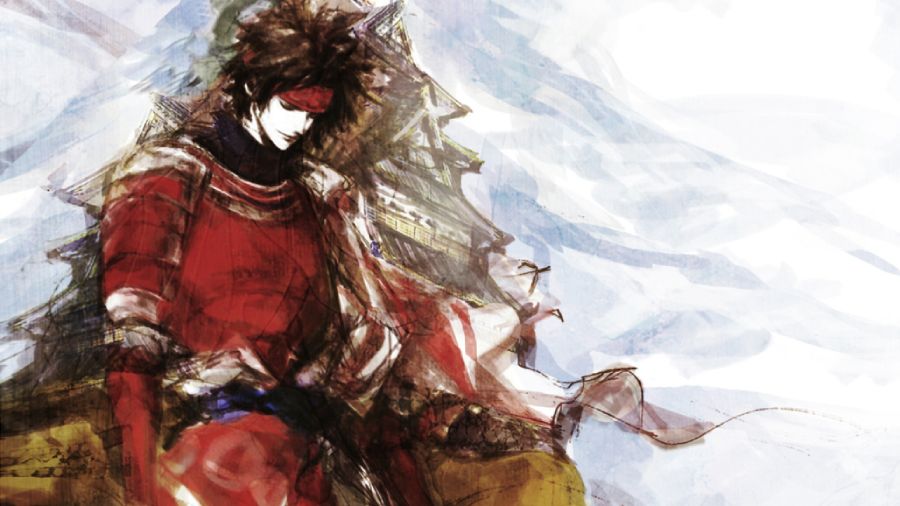
There is no video game sleeve or novel set in feudal Japan in which Yukimura doesn’t appear somewhere. Always with his incomparable red armor and looking like a dashing, handsome child. Sometimes they forget about their stag helmet features because, you know, it’s better to go open-faced to be able to wink at fans.
What is usually not left in the inkwell is its emblem, the famous Rokumon Sen, the six coins that, according to Buddhist tradition, souls had to pay to be transported to the afterlife. At the time, it must have looked like the equivalent of SS skulls: a crest that gave a pretty bad vibe when you had it in front of you.
Popular culture also attributes other feats to him, such as leading an invincible ninja team, the Ten Braves of Sanada, where we find the names of legendary shinobi like Sarutobi Sasuke and Kirigakure Saizo. So everyone cleans Ieyasu’s understudy in the very noses of his staff… Sanada Yukimura: stimulating the Japanese imagination since 1615.
In fact, joking aside, Yukimura is probably nothing more than a footnote in Japanese history. For many, a tragic hero; for others, an overrated general who never won a significant victory. In all fairness, it must be acknowledged that, like his father, he was a skillful, competent, and, above all, very courageous commander.
If he had also had a better view when choosing his loyalties, who knows how far he would have gone. In any case, 400 years after his death, at his grave in Yasui Shrine, a stone’s throw from Osaka Castle itself, fresh flowers are never in short supply. He may not have left a young, handsome corpse, but it’s clear that Sanada Yukimura is still alive in the hearts of the Japanese. Another example of this city’s taste for handsome losers that so abounded in its history.
